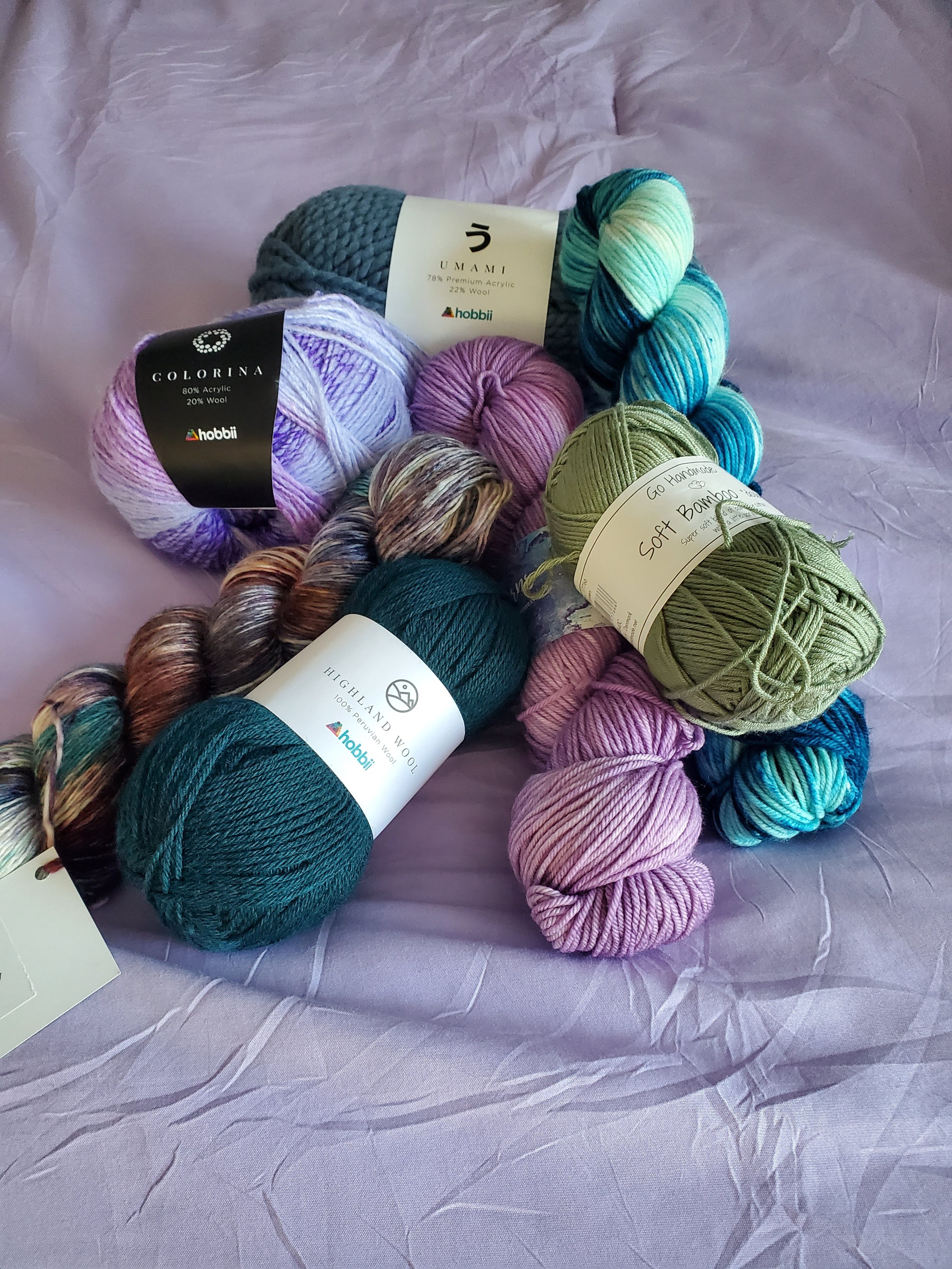What Yarn Should I Use?
When I started crocheting, I knew nothing about the different fibers yarns are composed out of. All I knew was I was in college and didn’t have a lot of money for trying out a new hobby, so I just grabbed what was the biggest and cheapest yarn Walmart had (in case your were wondering, it was Red Heart Super Saver).
Now, I am very choosey about what yarns I use for certain projects. I personally prefer merino blends or cotton yarns, but I do have the occasional acrylic yarn in my stash for gifts or kids’ hats.
It was a bit intimidating, trying to navigate what fiber blends are out there and what they can or cannot be used for. To help, I wrote up this comprehensive guide of yarn fibers and my recommendations for which projects to use them for!
Join me on my crochet journey! You can find me on Instagram and TikTok, both @crochetingsavvy. I also have a YouTube channel under the same name, where I have a few tutorials for some of my patterns! My patterns are available here on my website shop, as well as on Ribblr and Ravelry.
Now, let’s talk yarn!
Acrylic
Acrylic is a synthetic, man-made material that makes up a large majority of any commercial yarn you will find in big box stores. The actual material, acrylic, is a type of plastic. While they can be made soft in the yarn-making process, some of them can be quite scratchy, so watch out if you have sensitive skin! Because it is a type of plastic, acrylic yarn does have a nice shine to it which draws a lot of eyes in the stores, along with the lower price!
Another plus to acrylic yarn is that a lot of acrylic yarn is labelled as machine-washable, which many other fibers do not say. While they can be machine washable, it should be done according to the label, which is usually on a cooler temperature and tumble dry or lay flat to dry.
Because acrylic is plastic, many people who are trying to lower their carbon footprint or be conscious of the environmental impact avoid acrylic yarn as much as possible, as it is not biodegradable.
Now, while acrylic is not my favorite, there are some I really like!
This is Hobbii Universe. It is a fingering weight yarn, 98% acrylic and 2% polyester, and 505 yards in a skein. It is a beautiful variegated yarn with a strand of glitter to give it a nice shine. There are 43 different colorways to choose from, and there is also a Universe XL, which is a DK weight and 35 colors.
Caron Simply Soft is a wonderful worsted weight yarn. It is a part of the Yarnspirations Caron Yarn line, and honestly, probably my favorite! It is lovely to work with, and the palette of 41 colors is wonderfully vibrant! You can find it on the Yarnspirations website or at most craft stores.
Cotton
Cotton is fairly straightforward. It is yarn spun from cotton fibers. There is kitchen cotton, which is fairly rough and intended for use in the kitchen, as a dishcloth, dish scrub, kitchen towel, etc. There is also mercerized cotton, which is stronger, takes to the dye better, but also has a softer feel, which makes it good for wearables! It is such a versatile fiber, it can be used for nearly everything you can imagine: garments, cloths, coasters, rugs, baskets, cup cozies, the list is endless! Cotton can be washed, but again, pay attention to the care instructions on the yarn label!
One of my favorites is the Rainbow Cotton yarn from Hobbii. It comes in fingering, sport, and DK weight and has the brightest and most extensive color palette I’ve ever seen!
I Love This Cotton Yarn from Hobby Lobby is another favorite. While the color palette is not very extensive, it is good quality and a great price for the yardage!
Wool
Wool is a fairly broad category. It can be sheep wool, alpaca wool, yak wool, but it is wool. Wool tends to be a bit rougher and have special care instructions, as wool tends to felt if washed in a machine. I personally think it is worth it, as the fabric made when knit or crocheted is warmer than acrylic or cotton. I know I like a nice wool scarf when it’s winter! Some of the more common “specialty” wool yarns are the mohair and superwash merino, so those prices tend to be bit higher. Wool tends to be used more for wearables than anything else, i.e., hats, scarves, sweaters, socks, gloves.
Hobbii’s Highland Wool is a DK weight, 100% Peruvian Highland wool yarn, with a beautiful color palette of 39 colors. It is a bit rough at first, but once it is washed, it is the warmest, softest thing ever!
Lion Brand’s 100% Superwash Merino is also DK weight yarn, and it is the perfect yarn for any garment! It has the prettiest look in it’s pastel colors, and is the plushest fabric when worked up!
Now, this in no way covers every type of yarn out there, I just touched on the basics of the most common fibers I see. If there is anything you think I missed and should mention in a future post, let me know! Also, hit me up on the socials so you can keep up with what I’m doing! Happy Crocheting!

